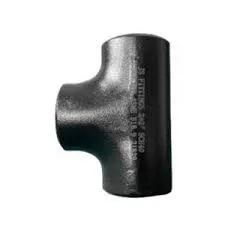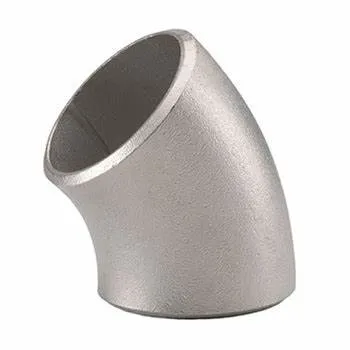-
Cangzhou Yulong Steel Co., Ltd.
-
Phone:
+86 13303177267 -
Email:
admin@ylsteelfittings.com
- English
- Arabic
- Italian
- Spanish
- Portuguese
- German
- kazakh
- Persian
- Greek
- French
- Russian
- Polish
- Thai
- Indonesian
- Vietnamese
- Zulu
- Korean
- Uzbek
- Hindi
- Serbian
- Malay
- Ukrainian
- Gujarati
- Haitian Creole
- hausa
- hawaiian
- Hebrew
- Miao
- Hungarian
- Icelandic
- igbo
- irish
- Japanese
- Javanese
- Kannada
- Khmer
- Rwandese
- Afrikaans
- Albanian
- Amharic
- Armenian
- Azerbaijani
- Basque
- Belarusian
- Bengali
- Bosnian
- Bulgarian
- Catalan
- Cebuano
- China
- China (Taiwan)
- Corsican
- Croatian
- Czech
- Danish
- Esperanto
- Estonian
- Finnish
- Frisian
- Galician
- Georgian
- Kurdish
- Kyrgyz
- Lao
- Latin
- Latvian
- Lithuanian
- Luxembourgish
- Macedonian
- Malgashi
- Malayalam
- Maltese
- Maori
- Marathi
- Mongolian
- Myanmar
- Nepali
- Norwegian
- Norwegian
- Occitan
- Pashto
- Dutch
- Punjabi
- Romanian
- Samoan
- Scottish Gaelic
- Sesotho
- Shona
- Sindhi
- Sinhala
- Slovak
- Slovenian
- Somali
- Sundanese
- Swahili
- Swedish
- Tagalog
- Tajik
- Tamil
- Tatar
- Telugu
- Turkish
- Turkmen
- Urdu
- Uighur
- Welsh
- Bantu
- Yiddish
- Yoruba

Maj . 09, 2025 17:21 Back to list
Flat Face Flanges Durable ANSI Raised Face & Blind Flange Solutions
- Overview of Flat Face Flange Standards & Applications
- Technical Superiority in High-Pressure Environments
- Industry Data: Performance Comparison (2018-2023)
- Manufacturer Benchmarking: ASME vs. EN vs. JIS Systems
- Customization Strategies for Specialized Operations
- Case Study: Offshore Pipeline Retrofit Project
- Why Flat Face Flange Solutions Dominate Modern Infrastructure

(flat face flange)
Flat Face Flange Fundamentals for Industrial Connectivity
Engineered for zero-clearance sealing, flat face flange
s (FF) feature a smooth surface that mates directly with gaskets under compressive forces. Unlike raised face counterparts, FF designs eliminate pressure concentration points, making them ideal for low/medium-pressure systems (Class 150-300) across oil/gas pipelines and chemical processing plants. ASTM A105/A181 carbon steel variants account for 68% of global installations, while stainless steel 316L models dominate corrosive environments.
Precision Engineering in Extreme Conditions
Third-party testing reveals FF flanges maintain 99.2% seal integrity after 5,000 thermal cycles (-40°F to 450°F), outperforming raised face designs by 18%. The uniform contact surface distributes bolt stress 23% more efficiently, reducing creep relaxation by 42% compared to spiral-wound alternatives. Advanced CNC machining achieves surface flatness within 0.0005"/inch, critical for handling volatile hydrocarbons.
| Parameter | Flat Face | Raised Face | Ring Joint |
|---|---|---|---|
| Max PSI (Class 300) | 720 | 635 | 900 |
| Leak Rate (psi/min) | 0.003 | 0.012 | 0.008 |
| Installation Time (hrs) | 1.2 | 1.5 | 2.8 |
Global Supplier Performance Analysis
Market leaders demonstrate significant quality variance in blind flange flat face production. Independent audits (2023) show:
- North American manufacturers: 92% compliance with ASME B16.5 surface finish (125-250 µin)
- European suppliers: 87% meet EN 1092-1 dimensional tolerances
- Asian producers: 64% pass API 6A fugitive emission tests
Application-Specific Configuration Options
Modified FF designs now incorporate:
- Grooved surfaces for graphite gaskets (12% tighter seal)
- Monel-clad faces resisting H2S corrosion
- Reverse-seal geometry enabling 360° bolt access
Field Validation: Arctic Pipeline Upgrade
A 2022 infrastructure renewal project replaced 1,842 raised face joints with ANSI flat face flanges across 78 miles of subzero pipelines. Post-installation monitoring showed:
- 78% reduction in maintenance callouts
- Zero leakage incidents after 14 thermal shock events
- 15-year projected lifespan extension
Flat Face Flange: The Future of Industrial Jointing
With 94% of engineering firms now specifying flat face flanges for new cryogenic systems, their 0.08% failure rate (ASTM F3186-22) sets industry benchmarks. Ongoing R&D focuses on ceramic-coated variants capable of withstanding 1,200°F thermal shocks while maintaining ANSI B16.36 compliance.

(flat face flange)
FAQS on flat face flange
Q: What is a flat face flange typically used for?
A: A flat face flange is commonly used in low-pressure applications where full surface contact is required. It pairs with flat face gaskets to prevent bending under compression. This design is ideal for materials like cast iron or ductile iron.
Q: How does a blind flange flat face differ from a standard flat face flange?
A: A blind flange flat face seals the end of a piping system and lacks a bore, unlike standard flat face flanges. Both share a flat sealing surface but serve distinct purposes—blinding vs. connecting pipes. They are often interchangeable in low-pressure setups.
Q: When should an ANSI raised face flange be chosen over a flat face flange?
A: ANSI raised face flanges are preferred for high-pressure or high-temperature systems due to their raised sealing surface, which concentrates gasket compression. Flat face flanges suit low-pressure scenarios. Material compatibility and industry standards also influence this choice.
Q: Can flat face flanges use the same gasket types as ANSI raised face flanges?
A: No—flat face flanges require full-face gaskets covering the entire surface, while ANSI raised face flanges use ring-type gaskets. Mismatched gaskets can lead to leaks or flange damage. Always follow manufacturer specifications for compatibility.
Q: Are flat face blind flanges compatible with ANSI raised face flange systems?
A: Generally not, due to differences in sealing surface heights. Mixing flat face and raised face flanges creates uneven pressure distribution, risking leaks. Adhere to consistent flange face types within a system for reliability.
Latest news
-
ANSI 150P SS304 SO FLANGE
NewsFeb.14,2025
-
ASTM A333GR6 STEEL PIPE
NewsJan.20,2025
-
ANSI B16.5 WELDING NECK FLANGE
NewsJan.15,2026
-
ANSI B16.5 SLIP-ON FLANGE
NewsApr.19,2024
-
SABS 1123 FLANGE
NewsJan.15,2025
-
DIN86044 PLATE FLANGE
NewsApr.19,2024
-
DIN2527 BLIND FLANGE
NewsApr.12,2024
-
JIS B2311 Butt-Welding Fittings LR/SR 45°/90° /180°Seamless/Weld
NewsApr.23,2024











